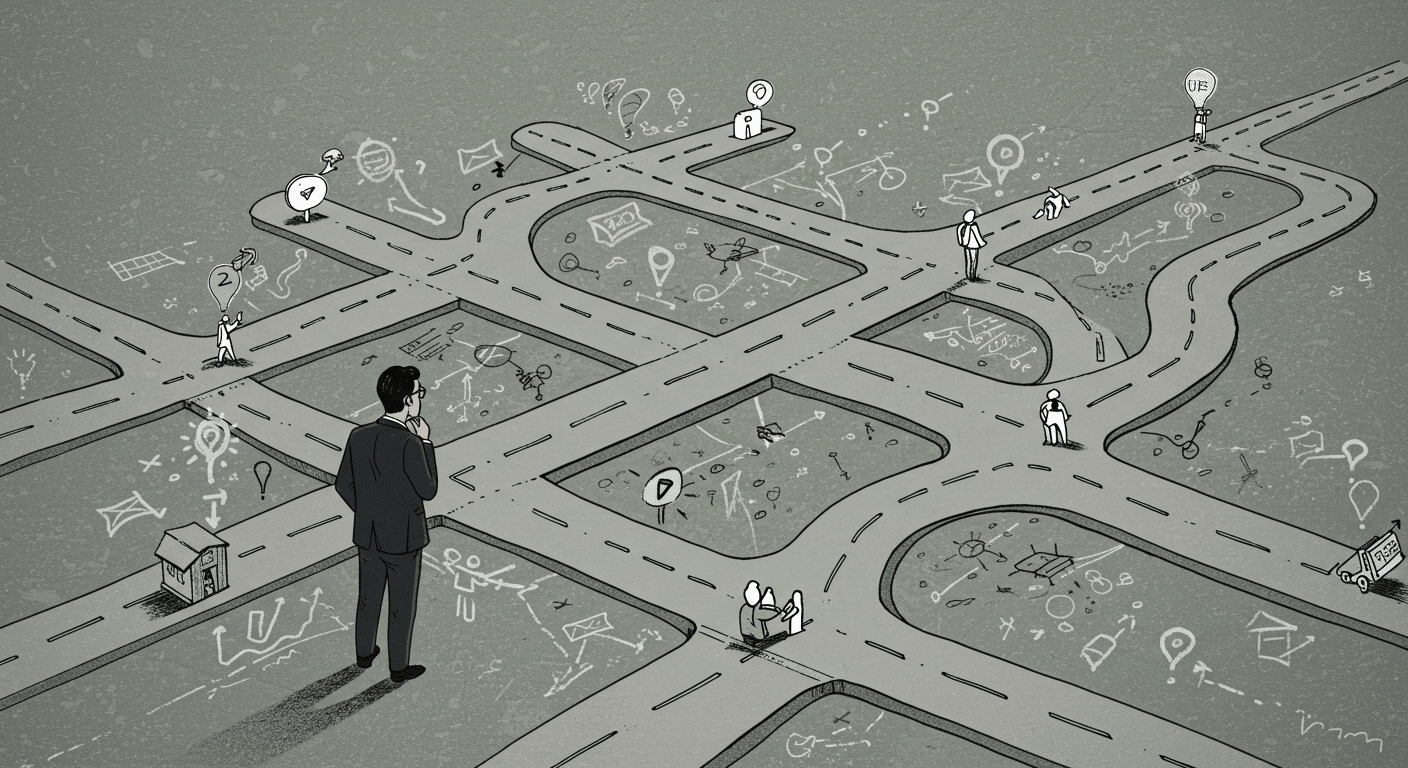Closing the Gap Between Management & The Rest of the Team
Historically, companies have followed a capitalist structure that sees senior and experienced managerial staff at the top of a hierarchy overseeing team members with varying levels of responsibility.
As a result, many organizations tend to withhold information from the wider workforce that they may see as unnecessary to share, and they may engage in other behaviors that indirectly impact workforce morale, productivity, and job satisfaction.
Below, we’ll explore some ideas that focus on the idea of closing the gap between management and team members, a crucial factor to improving the engagement of a workforce that has been noted to have dropped in recent years.
An Inevitable Hierarchy
The familiar hierarchical pyramid of a senior management team overseeing a wider workforce is often challenged. Some companies have begun to flex their organizational structure, but there’s no denying that workplace hierarchy has been shown to drive success throughout history. While the modern working environment has afforded a voice to many dissatisfied employees who challenge the idea of an organizational hierarchy, it is crucial for a number of reasons:
Hierarchies ensure proper organization and leadership: Experience and success help drive talented individuals to the top of a hierarchy in the business world. This natural proclivity ensures that a business stands the greatest chance of success. Historically, there’s evidence that strategic goals are more likely to succeed when teams of people are striving toward the same outcome, but a disconnected group of people with equal responsibility and authority is unlikely to deliver the same output, where everybody is working toward their own goals and preferences.
Hierarchies nurture both collaboration and authority: Naturally, as an employee’s authority rises, the higher the higher they will sit within the pyramid of hierarchy. This unbroken chain ensures collaboration across the board at each level of seniority, increasing the chance of a business hitting its goals together, while creating consequences for those who work against them.
Hierarchies create a drive to improve oneself: For many people, the idea of career progression is an important factor in remaining motivated and productive. This hierarchy must exist to ensure that there is a goal on the horizon for employees to work toward, while delivering their best.
Of course, with any hierarchy, employees who sit lower within the pyramid can become disillusioned with factors including compensation, perceived lack of value, micromanagement, and a myriad of other problems that can impact performance and productivity, and worse, lead to rising levels of staff attrition.
So, how can organizations improve team engagement and ultimately improve productivity and morale?
Top-to-Bottom Transparency in a Business
Workplace transparency brings about a number of organizational benefits. This list includes improved employee happiness, greater innovation through a wider pool of ideas, and a flatter, yet crucially still-present hierarchy that retains structure within the organization.
Transparency improves overall trust in the workplace, allowing employees to feel that they are working as part of a team, as opposed to following the instruction of those “above them.” Employees who feel that their input is trusted will feel more committed to the overall strategic goals of the organization, be more willing to share their own ideas, and seek out innovation.
Some of the means by which an organization can instill a greater sense of trust and transparency among the workforce include:
- Being honest and upfront with team members.
- Sticking to commitments made to the workforce, whether that’s in delivering on promised performance reviews or allotted vacation time.
- Communicating regularly, clearly, and effectively, leaving no room for misinterpretation or dissatisfaction.
- Being human and helpful, assisting other members of the organization, even when a responsibility, question, or role appears to be “beneath you” in terms of seniority.
- Being transparent about company success or failure, sharing in the organization’s direction and achievements – or shortcomings. Team members appreciate feedback on how the company is performing under their efforts.
- Building an aligned team in which each member has accountability.
Adopting Healthy Communication at All Levels
Good communication is one of the most essential tools used to maintain productivity and foster good working relationships between employees at all levels of seniority. Leaders who communicate well with their direct reports and employees will be seen as more trustworthy – which we’ve already established can impact on morale, productivity, and staff attrition – while employees who communicate effectively are a valuable asset to any organization.
CEOs and other senior managers need to ensure that healthy communication flows through to all levels of the organization, both through indirect organizational updates, and through a culture of continuous communication between mid-level management and the wider workforce. This can be achieved through:
- Knowing the best way to communicate different information, delivering positive, negative, or neutral messages in appropriate ways.
- Using face-to-face communication wherever possible, as opposed to indirect messaging applications – or defaulting to videoconferencing in remote environments.
- Choosing appropriate tone and body language when communicating with employees, avoiding projecting an intimidating and authoritative image.
- Taking two-way feedback into account, allowing employees the chance to provide their own opinions and feedback. Many companies now use 360 feedback sessions, in which team members can comment on leadership without fear of reprisal.
1:1 Meetings
While you’re likely already meeting with your teams on a regular basis, the importance of 1:1 meetings can’t be understated.
As many as 58% of employees feel that one-on-one meetings instill a greater sense of motivation. Resulting factors contributing toward employee motivation include the opportunity to provide 360 feedback, a closer sense of belonging to the team and organization, and personal, role-based feedback that helps them to improve in their own day-to-day delivery.
Scheduling regular 1:1s with your workforce is an optimal way to tap into the pulse of your organization and understand the challenges being faced by those on the ground. It improves communication across the board, fostering a culture of openness and trust, which has shown a positive impact on business’ financial performance.
Team Meetings
Effective team meetings help create a stronger bond among the team members who work together, creating a positive co-working dynamic. While modern challenges have arisen since the Covid-19 pandemic, videoconferencing can still help to create a deeper connection among employees.
Teams that regularly meet together will be more adept at making faster, more informed decisions, innovating, and providing feedback that helps each member improve in their role. Numerous research studies have shown that teams with more functional interaction derive greater satisfaction from their meetings, which in turn leads to increased team productivity. Incredibly, one such study highlights how the benefits of structured and successful meeting planning can be seen as much as 2.5 years after the fact.
Culture
Your organization’s culture directly contributes to the brand identity and values that it champions. This feeds into the values that your employees should strive to champion themselves; it’s weaved into everything the organization does. As such, it drives alignment not only among team members, but between teams, and this results in a consistent message that reaches your end users or clients.
Moreover, having a strong company culture has a positive impact on attracting and retaining the best talent. If people work in a silo and don’t feel that they’re part of a wider culture, they’ll be more likely to seek alternative employment.
More importantly, in recent years, there’s been an ever-growing focus on company culture to the point where significant impacts on revenue generation have been found in companies that place little or no focus on culture. Companies who have a poor culture have been shown to experience as much as a 33% reduction in operating income and 11% reduction in earnings growth.
Employee Net Promoter Score (eNPS)
Your organization doesn’t need to rely solely on customer feedback to drive improvements. Many organizations are now turning to something known as the “Employee Net Promoter Score,” or eNPS. This score is a measure of the employee experience within your organization, which is derived from honest, anonymous feedback provided by the people who experience it first-hand – your employees.
Starting with Apple, this method has now been adopted widely by a range of organizations. The eNPS is essentially a basic calculation of the disparity between your happiest and most dissatisfied employee. Calculating your own eNPS can be done by using survey software to distribute employee surveys that ask two key questions:
- “How satisfied are you with the organization as a place to work?”
- “What feedback do you have for senior management?”
The easiest calculation is made when you give your employees a chance to score the first question on a scale of 1-10. With this, you can quickly work out how your organization is performing on a holistic basis that uses the most accurate data possible.
Team Activities to Build Engagement
Problem solving and its associated benefits can be affected outside of the organization as much as in day-to-day meetings and delivery of work. One of the easiest ways to encourage team bonding and strengthen relationships within your teams is through team-building exercises.
These events do not have be strictly focused on work-related topics; in fact, events such as escape rooms and murder mystery riddles, while centered around “having fun,” can have significant impacts on your team’s daily work.
Well-structured team-building activities can instill a number of benefits, including improving problem-solving abilities and innovation, leading to greater job satisfaction, and nurturing overall relationships within your teams.
Final Thoughts
While managerial and leadership hierarchies are essential for the efficient and profitable operation of any organization, they can present challenges when companies take on an “us vs. them” culture.
Good communication, a strong company culture, trust, and transparency are all essential to reduce the divide between leadership and team members, driving improved productivity, morale, engagement, business profit, and staff retention.
To learn how Align can help you master communication to squash inconsistencies and align as a team, schedule your demo today.





